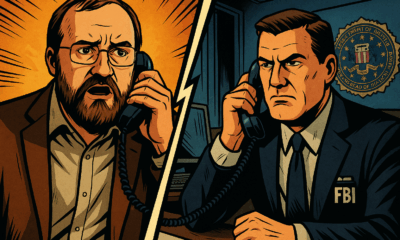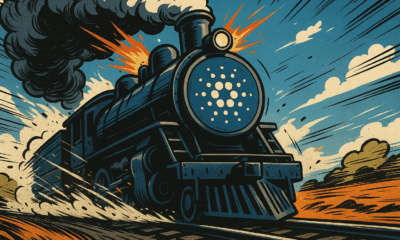Cardano
Cardano Breaks Ground in India: Trivolve Tech Launches Blockchain Forensic System on Mainnet

- Share
- Tweet /data/web/virtuals/383272/virtual/www/domains/theunhashed.com/wp-content/plugins/mvp-social-buttons/mvp-social-buttons.php on line 63
https://theunhashed.com/wp-content/uploads/2025/09/india-1000x600.png&description=Cardano Breaks Ground in India: Trivolve Tech Launches Blockchain Forensic System on Mainnet', 'pinterestShare', 'width=750,height=350'); return false;" title="Pin This Post">
Justice Meets the Blockchain: A New Chapter in Cardano Adoption
On September 15, 2025, Cardano made one of its most impactful strides into real-world utility yet. Trivolve Tech, a Dubai- and India-based product studio, officially launched its Forensic Management System (FMS) on the Cardano Mainnet in partnership with the Uttar Pradesh Police, marking a revolutionary moment for blockchain in public sector governance. With India’s most populous state—home to over 241 million people—now running secure, tamper-proof forensic operations on Cardano, the implications for global adoption are seismic.
From Vision to Deployment: Who Is Trivolve Tech?
Trivolve Tech is no newcomer to innovation. Co-founded by CEO Rahul Konudula and built by a tight-knit team of 31 experts, the company specializes in blockchain and AI solutions that bridge theory and practice. Backed by Cardano’s Project Catalyst Fund 12 with 550,000 ADA in 2024, Trivolve set out to address a deep-rooted issue in India’s criminal justice system: unreliable chain-of-custody for forensic evidence.
Their solution? The Forensic Management System, or FMS—a platform designed not only to record and track evidence securely but to ensure that it remains untampered across the lifecycle of a criminal case. With high-profile legal dismissals in India often tied to corrupted or missing evidence, this innovation hits at a core institutional pain point.
Working alongside Quixy, a no-code platform known for enabling over 26,000 applications, Trivolve built a front-end interface that could be rapidly deployed within UP Police stations and forensic labs. As of September 2025, four of the six project milestones are complete, culminating in a fully operational mainnet launch. But this is just the beginning: the FMS is poised to expand across all 28 Indian states, potentially revolutionizing how millions of legal cases are processed every year.
How It Works: Cardano-Powered Forensics in Action
The technical design behind the FMS reads like a wish list for secure, scalable justice tech. Here’s what makes it groundbreaking:
Every time a piece of forensic evidence is logged—be it a physical object, digital file, or lab report—the system automatically generates unique case IDs and pseudonymous aliases. These identifiers are hashed using SHA-256, creating a digital fingerprint that becomes virtually immutable.
Next, these hashes, along with corresponding zero-knowledge proof (ZKP) public keys, are stamped on Cardano’s Mainnet. This isn’t just digital bookkeeping—it’s a legally defensible timestamp locked into a global, decentralized network. Cardano’s UTXO model and Proof-of-Stake consensus architecture enable both high transaction throughput and low fees, ideal for handling the volume of evidence generated by one of the world’s largest police forces.
Zero-knowledge proofs play a critical role in privacy compliance, particularly under India’s rigorous data protection laws. ZKPs allow third parties—like courts or auditors—to verify that the evidence on-chain matches the original submission, all without revealing the actual contents. This not only enhances security but ensures data confidentiality in high-stakes investigations.
To make the system scalable, Trivolve embedded AI for indexing and search functionalities. Investigators can retrieve case information within seconds, a task that used to take days or even weeks. The AI handles massive data loads, ensuring that the system doesn’t buckle under the pressure of UP’s million-plus annual forensic caseload.
Why Cardano? A Blockchain Built for Governance
Trivolve’s choice of Cardano was no accident. Unlike permissioned blockchains, Cardano’s public, decentralized nature ensures transparency and resilience against tampering, making it ideal for institutions plagued by legacy inefficiencies and corruption.
More than that, Cardano’s academic foundation, peer-reviewed updates, and environmentally sustainable infrastructure lend it the credibility required to underpin government services. Its UTXO-based smart contract system allows for deterministic outcomes—a crucial feature when court admissibility is on the line.
This isn’t Cardano’s first foray into public sector use. Dubai Police previously piloted a Cardano-based system for sharing ballistic evidence with Interpol. But the FMS rollout in Uttar Pradesh is on another scale, covering the full lifecycle of forensic case handling, from evidence collection to courtroom validation.
A Catalyst-Funded Dream, Realized
The FMS represents the fruition of a community-funded dream. Backed by ADA holders through Project Catalyst, it’s a prime example of decentralized finance fueling centralized reform. Trivolve Tech not only built a robust solution but secured a government contract to implement it—a rare feat in the blockchain industry.
When CEO Rahul Konudula met with Uttar Pradesh Deputy Inspector General Rohan P. Kanay to commemorate the mainnet launch, the handshake wasn’t just symbolic. It marked a convergence of public policy and decentralized tech, something Cardano has long aspired to achieve.
For ADA holders, this is more than a feel-good story. The FMS is expected to process over 10,000 transactions in its first month, adding sustainable, high-utility volume to the network. If the project scales nationwide, annual transaction figures could soar into the millions, translating to real demand for ADA and increased network engagement.
Looking Ahead: A Blueprint for Global Blockchain Governance
The FMS isn’t a siloed initiative. It’s a prototype for how public services worldwide could integrate blockchain to bolster transparency, efficiency, and accountability. Countries grappling with similar issues in evidence management—from Brazil to South Africa—are likely to watch India’s rollout closely.
Trivolve has hinted at broader plans, possibly extending its AI-integrated blockchain systems into other areas of public administration such as land records, healthcare compliance, or supply chain monitoring. If successful, this trajectory could place Cardano at the heart of next-generation governance infrastructure.
In a world awash with vaporware and unfulfilled promises, the Cardano-Trivolve-UP Police collaboration stands as a rare example of blockchain making a tangible difference. Not just in DeFi, NFTs, or DAOs, but in the pursuit of justice.
Conclusion: Cardano’s Defining Moment?
For a protocol often criticized for moving slowly, Cardano just delivered a leap. A forensic management system deployed on its Mainnet, in partnership with one of the world’s largest police forces, addressing a real and pressing need—that’s not just adoption; it’s transformation.
As Cardano continues to push into real-world asset solutions and decentralized governance, the FMS project in Uttar Pradesh may well be remembered as the spark that lit a global movement. It is proof that blockchain can serve more than speculation; it can serve society.
And in the years to come, when blockchain history books are written, this September 15th may be the day Cardano stopped being a project and started being a pillar of public trust.
Cardano
Solana co‑founder publicly backs Cardano — signaling rare cross‑chain respect after 2025 chain‑split recovery
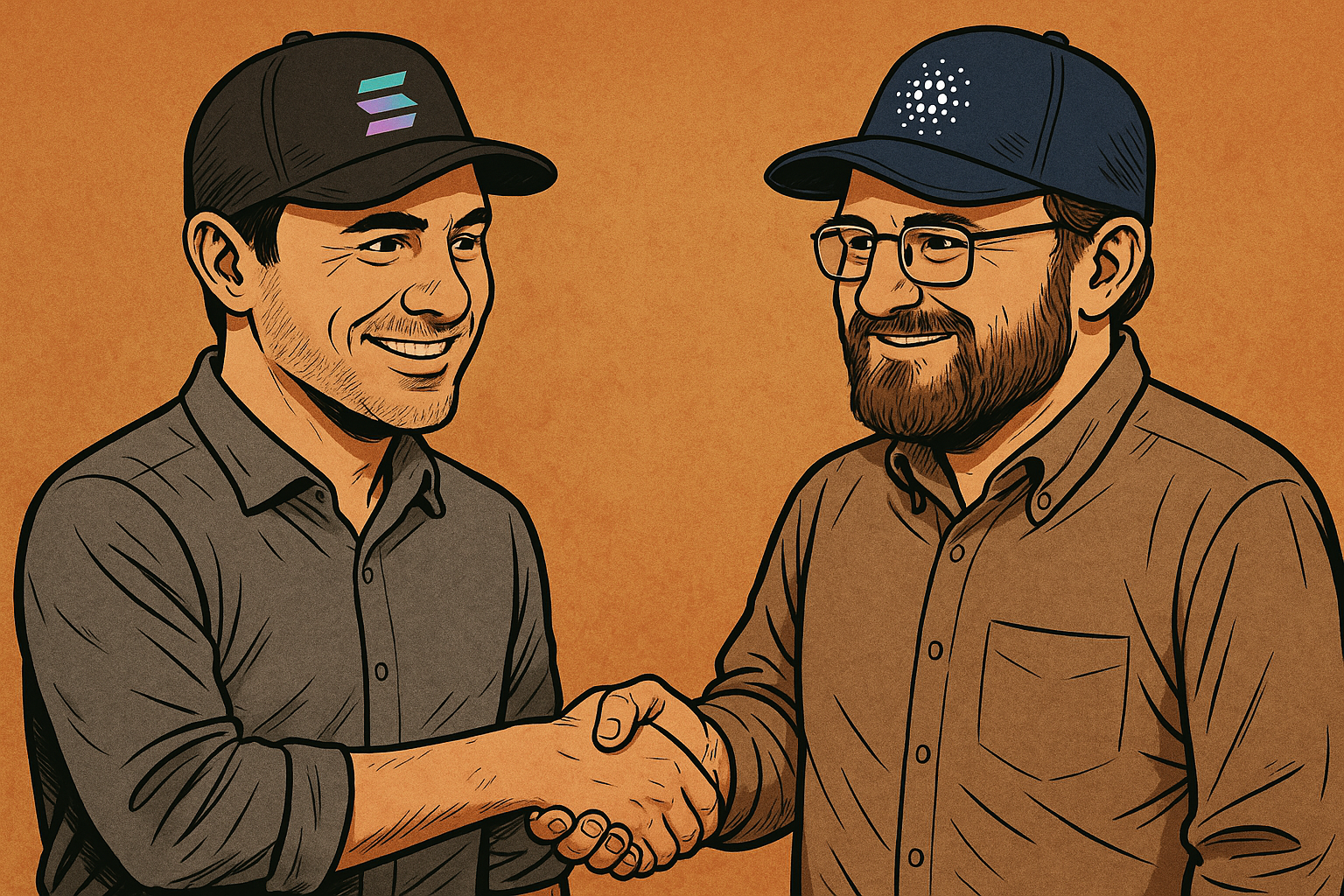
From Incident to Validation
In a development that surprised many in the blockchain world, Solana co-founder Anatoly Yakovenko publicly praised Cardano following its recent chain-split incident. What could have been a blow to Cardano’s reputation instead became an unexpected moment of validation — not just from within its own ecosystem, but from one of its most prominent rivals.
The Split That Wasn’t a Stop
On November 21, 2025, Cardano experienced a technical divergence caused by a malformed transaction. The issue stemmed from a bug in the serialization and deserialization logic of its node software — a deep protocol-level vulnerability. Some nodes processed the transaction as valid, while others rejected it, resulting in two competing forks of the blockchain running simultaneously.
But here’s the critical part: Cardano never stopped. The Ouroboros consensus mechanism kept producing blocks on both forks. And once the problem was identified, developers rapidly issued a patch. Stake pool operators upgraded their nodes in a matter of hours, and the network converged back onto a single canonical chain — no hard fork, no downtime, no loss of funds.
Yakovenko’s Unexpected Endorsement
Shortly after the incident, Solana’s Anatoly Yakovenko weighed in with a surprising take. He acknowledged that creating a Nakamoto-style consensus without relying on energy-intensive Proof-of-Work is “extremely hard to build” — and concluded that Cardano “actually nailed it.” He called the network’s recovery after the split “pretty cool.”
This kind of comment matters. It wasn’t just a technical compliment — it was a recognition from a competitor that Cardano’s foundational architecture, often criticized for being slow-moving or overly academic, delivered exactly what a blockchain is supposed to do: it kept running, adapted, and healed itself.
The Design Behind the Recovery
Cardano’s recovery didn’t happen by luck. It’s the product of years of research-first development: a layered architecture, formal verification, and the Ouroboros consensus engine designed specifically to prioritize security and resilience.
Most importantly, the resolution didn’t depend on a central authority stepping in. The “honest chain” prevailed through natural consensus. Operators coordinated globally without coercion. The update rollout was swift. The split was resolved without user impact beyond brief transaction slowdowns.
These are not small feats in a decentralized environment. They represent the kind of maturity that few chains — even large ones — have demonstrated under live pressure.
A Rare Signal in Crypto Culture
What makes this moment especially significant is that it cuts through the tribalism that usually defines blockchain communities. Yakovenko didn’t take a victory lap or criticize a competitor. Instead, he acknowledged a technical achievement — one that aligns, at least in spirit, with the broader mission of blockchain: decentralized systems that can withstand failure and continue operating trustlessly.
This is a sign that the blockchain space may be maturing. Cross-chain respect, while rare, is important. It suggests a shared understanding that competition shouldn’t come at the cost of ignoring good engineering when it happens — even on another protocol.
Reframing the Narrative Around Cardano
For Cardano, the incident — and the way it was handled — may redefine public perception. The network has long been portrayed as overly cautious, academic, or “too slow to ship.” But when put to the test, those same qualities may have enabled it to respond to a complex failure without chaos.
Cardano wasn’t flawless. But when failure came, it was recoverable. And that’s the real benchmark for a network that claims to be decentralized and secure. It didn’t just protect funds. It protected trust.
Final Thought
The blockchain space has seen its share of crises: bridges exploited, blockchains halted, forks forced under pressure. But Cardano’s chain split will likely be remembered not as a breakdown — but as a breakthrough. It showed that resilience in Proof-of-Stake is not only possible, but provable. And with respect coming even from Solana’s top leadership, it’s clear that Cardano’s architecture — often underestimated — is earning its place among the most battle-ready networks in the industry.
Cardano
Cardano Has Never Stopped — What the Chain Split Really Tells Us About Its Tech
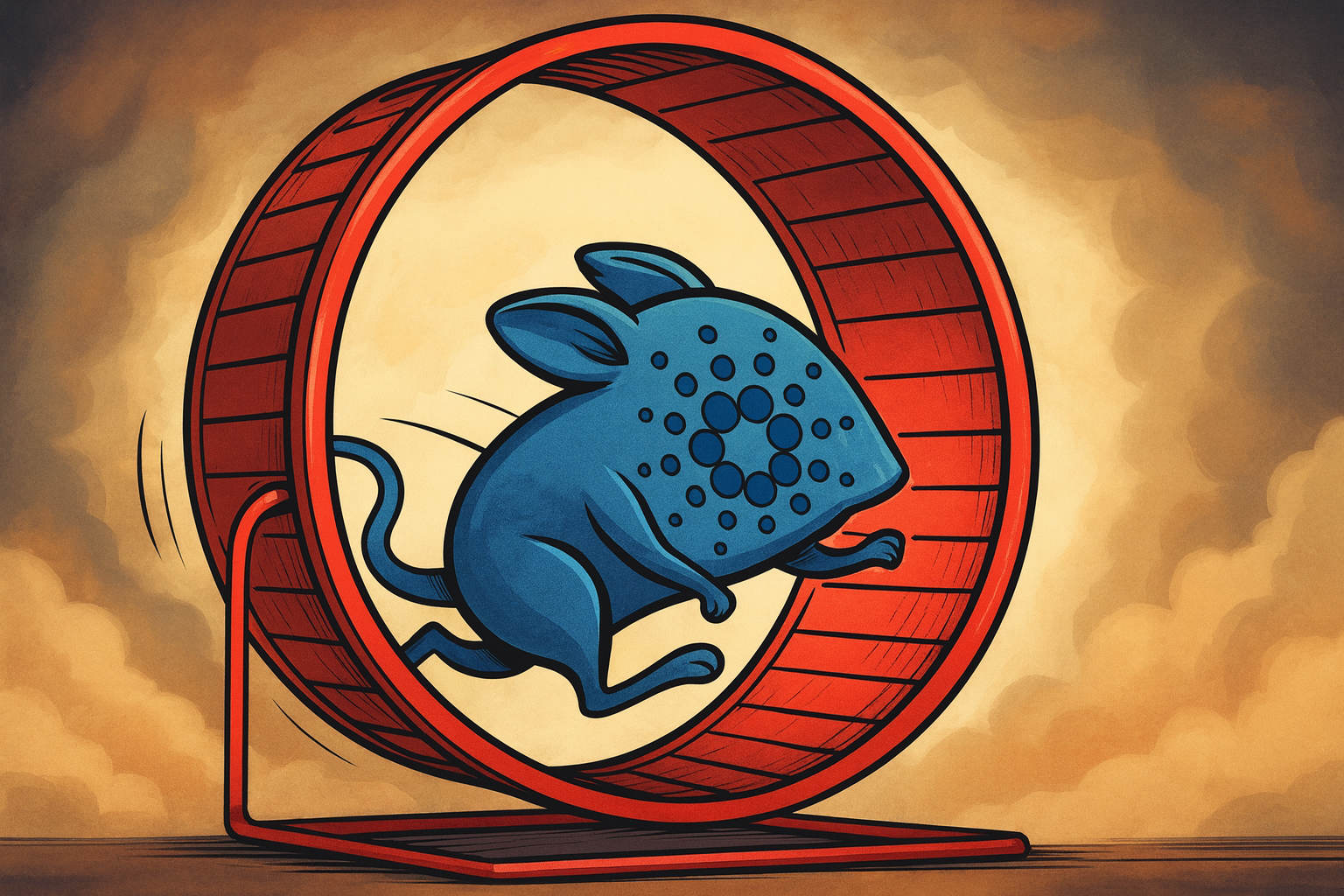
The Network Didn’t Fail. It Proved Itself.
On November 21, 2025, Cardano experienced what some feared might be a catastrophic event: a chain split. For about 14 hours, parts of the network diverged, with two versions of the blockchain running in parallel. But despite the panic and technical confusion, the result was clear—Cardano didn’t stop. The chain kept producing blocks, the network kept running, and the community coordinated a fix in real time. Far from exposing a flaw, the incident demonstrated just how solid Cardano’s architecture really is.
What Actually Happened: A Bug Meets an Edge Case
The chain split began when a malformed delegation transaction—created by an operator using AI-generated code—triggered a rarely encountered bug. The bug, which had been dormant in Cardano’s core software library since 2022, involved a discrepancy in how nodes processed transaction data during serialization and deserialization.
When this malformed transaction entered the network, some nodes interpreted it as valid while others rejected it. As a result, certain stake pool operators began building blocks on a forked version of the chain. This led to a temporary split: two incompatible chains running simultaneously.
Crucially, this was not a network halt. Cardano’s Ouroboros consensus algorithm continued to function. Blocks were still produced. Most users didn’t even notice the split until infrastructure like explorers, wallets, and exchanges began reporting inconsistencies. Transaction delays increased and around 3.3% of pending transactions were lost in the fork that was eventually discarded—but the underlying blockchain logic kept moving forward.
How Cardano Healed Itself
The recovery process was swift and decentralized. Core developers issued a patch to reject the malformed transaction type. Stake pool operators across the world upgraded quickly, voluntarily aligning with the correct version of the chain. No hard fork was required. No rollback or centralized intervention was needed. The protocol and the people around it did exactly what they were designed to do.
This recovery wasn’t just about code—it was about coordination. Cardano’s structure relies on a globally distributed group of node operators who can act independently but coherently. In this case, their rapid consensus allowed the network to self-correct in less than a day.
Why This Makes Cardano Stronger
Resilient systems aren’t the ones that never break. They’re the ones that recover quickly and accurately when they do. That’s exactly what happened here. Cardano faced a serious test, and it passed with its ledger intact and its community mobilized.
Rather than damage confidence, the event served as a validation of Cardano’s layered design and governance philosophy. It showed that even rare and difficult-to-detect bugs can be addressed within the existing framework. It also demonstrated that decentralization, when well organized, can outperform centralized systems in resilience.
Interestingly, even competitors took notice. The CEO of Solana—often seen as Cardano’s rival—publicly praised Cardano’s approach, acknowledging its strength in areas like formal verification and decentralized recovery. Such recognition from outside the ecosystem adds weight to the idea that Cardano’s fundamentals remain among the most robust in the space.
What It Means for Developers, Users, and Investors
For developers, the incident highlights the importance of safety in smart contract deployment. It also underscores the value of Cardano’s conservative, peer-reviewed approach to protocol changes. While some may criticize its pace, the trade-off for stability and recoverability is now clearer than ever.
For users, the key takeaway is trust. The network didn’t stop. Their funds remained safe. Their transactions, for the most part, were processed normally. And even when things went wrong, the fix didn’t rely on centralized authority—it relied on code and cooperation.
For investors, it signals maturity. Cardano didn’t implode. It didn’t require emergency governance. It didn’t pause block production. It endured, adapted, and continued. That’s more than can be said for many other blockchains in moments of crisis.
Final Word: Recovery Is Strength
Cardano’s chain split wasn’t a failure. It was a demonstration. It showed that robust protocol design, backed by a coordinated global community, can overcome unforeseen problems without permanent damage. No blockchain is immune to bugs—but few can claim they’ve weathered one this gracefully.
In a space where narratives often swing between hype and fear, the message from Cardano is simple and steady: even under pressure, Cardano has never stopped.
Cardano
Cardano Faces First‑Major Chain Split; Charles Hoskinson Involves FBI After Developer’s Experiment
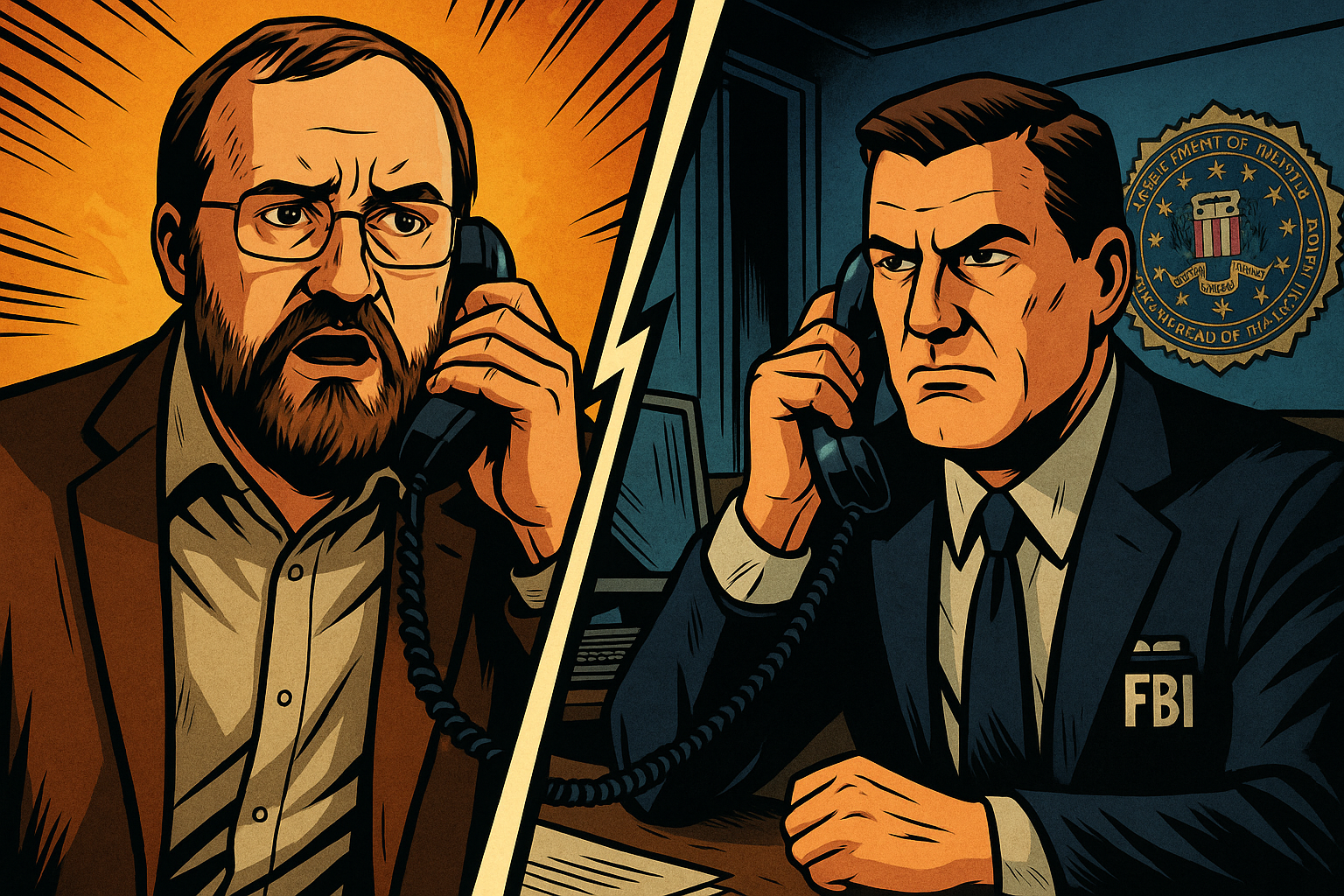
The blockchain world was shaken when Cardano suffered a temporary yet dramatic chain split on November 21, caused by a malformed delegation transaction that exploited a bug dating back to 2022. The culprit, a staking‑pool operator working under the alias “Homer J.,” later admitted the incident began as a personal challenge — he tried to reproduce a “bad transaction,” used AI‑generated instructions and inadvertently triggered a divergence in ledger history.
What happened on the chain
The split emerged when a delegation transaction passed validation in older node versions but was rejected by newer one, causing network nodes to diverge into two incompatible chains. Block production never stopped, yet exchanges paused operations amid the confusion. Emergency patches were deployed within three hours and the system converged back to a single chain by the next day. No user funds are reported lost so far.
Hoskinson’s response and legal implications
Charles Hoskinson described the incident as a “premeditated attack” rather than a simple error and confirmed that the U.S. Federal Bureau of Investigation is investigating the matter. He asserted that the operator “knows the FBI is already involved.” Meanwhile an employee of IOHK, Cardano’s lead development organisation, publicly resigned citing concerns about future legal consequences for development mistakes.
Market and ecosystem impact
In the immediate aftermath the native token ADA dropped by as much as 16 percent before stabilising. The broader narrative now hinges on governance trust, code‑audit rigour and the growing risk that even mature proof‑of‑stake networks can be shaken by obscure legacy bugs. The debate encapsulates one of crypto’s defining tensions: decentralisation versus operational risk.
What to monitor next
Attention will focus on whether Cardano can restore stakeholder confidence and sharpen its node‑software deployment processes. Will staking‑pool‑operators upgrade swiftly to the patched version? Will governance transparency improve? Also, regulators may begin paying closer attention to blockchain network incidents being treated as cyber‑attacks. And for ADA holders and developers, the key question remains whether network resilience can outpace reputational damage.
-

 Cardano2 months ago
Cardano2 months agoCardano Reboots: What the Foundation’s New Roadmap Means for the Blockchain Race
-

 Cardano2 days ago
Cardano2 days agoSolana co‑founder publicly backs Cardano — signaling rare cross‑chain respect after 2025 chain‑split recovery
-

 Bitcoin2 months ago
Bitcoin2 months agoQuantum Timebomb: Is Bitcoin’s Foundation About to Crack?
-

 Cardano2 months ago
Cardano2 months agoAfter the Smoke Clears: Cardano, Vouchers, and the Vindication of Charles Hoskinson
-

 Cardano2 months ago
Cardano2 months agoMidnight and Google Cloud Join Forces to Power Privacy‑First Blockchain Infrastructure
-

 Ripple2 months ago
Ripple2 months agoRipple CTO David “JoelKatz” Schwartz to Step Down by Year’s End, but Will Remain on Board
-

 News2 months ago
News2 months agoRipple’s DeFi Awakening: How mXRP Is Redefining the Role of XRP
-
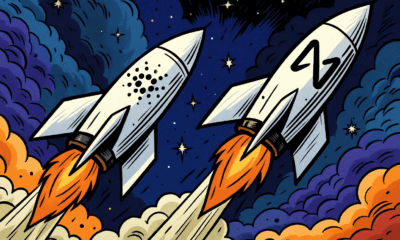
 Altcoins2 months ago
Altcoins2 months agoNEAR and Cardano Forge a New Cross‑Chain Alliance: What It Means for ADA and Web3 Interoperability





